Harvard University researcher developed a deformed design structure "reconfigurable materials" which can also be called a 3D puzzle whose tertiary structure can be changed one by one

Along with the development of technology, various materials with different characteristics of materials are coming out. However, "reconfigurable materials" have been devised which can significantly change shape and characteristics by changing the three-dimensional structure of one object.
Rational design of reconfigurable prismatic architected materials: Nature: Nature Research
http://www.nature.com/nature/journal/v541/n7637/full/nature20824.html
A toolkit for transformable materials | Harvard John A. Paulson School of Engineering and Applied Sciences
https://www.seas.harvard.edu/news/2017/01/toolkit-for-transformable-materials
The mysterious structural change of "reconfigurable materials" which can also be called "three-dimensional puzzles" that can change shapes more rapidly using models made of paper can be understood in a single shot by looking at the following movies. Or, it is difficult to understand the idea without watching the movie.
Reconfigurable Materials - YouTube
The concept of "reconfigurable materials" was invented by a research group of Harvard University's Johannes Overvelde et al.Materials Research Science and Engineering Center (MRSEC)WhenNational Science Foundation (NSF)It was completed with the support of. A model of a paper taken by a man in a movie is a model using the concept of reconfigurable materials.

Hand model with paper collapsed ......

As we spread it ......

If you think that a shape like a hexagon column appears, change the shape further ......
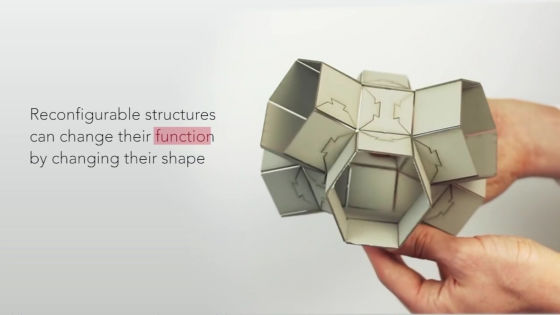
It turned into a solid that looked like stacked rectangular parallelepiped.
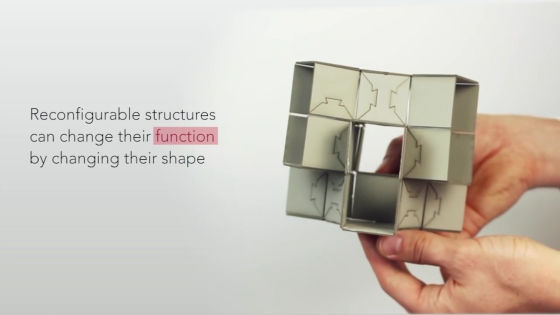
Pull it further in another direction ......
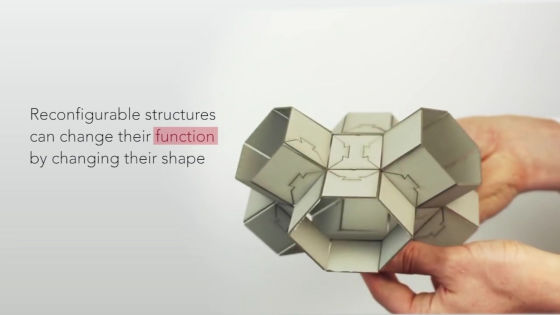
It transforms again into a cylinder with a hexagonal cross section.
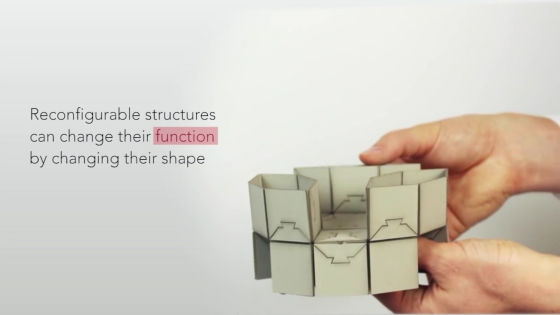
As you can see from the side, you can see that the hexagonal cylinder is deformed into a flat shape which is overlapped.

In addition, pulling the three-dimensional object so as to expand the hexagonal cylinder ...
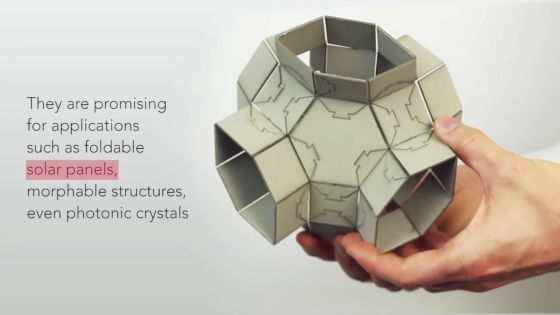
It becomes like a tetrapod ... ...
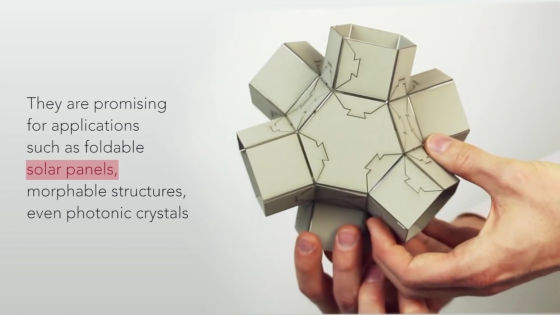
Make a shape like a gear. It seems like a single three-dimensional object made of paper changes form one by one looks like a magic trick, but this deformed three-dimensional structure is a feature of reconfigurable materials.
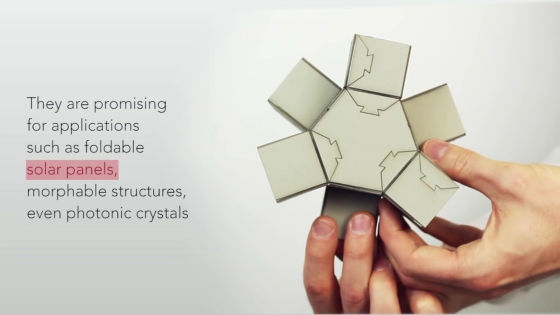
A model of paper made of more rectangular parallelepiped. This is also designed along the work frame of reconfigurable materials.

Make it fold ... ...
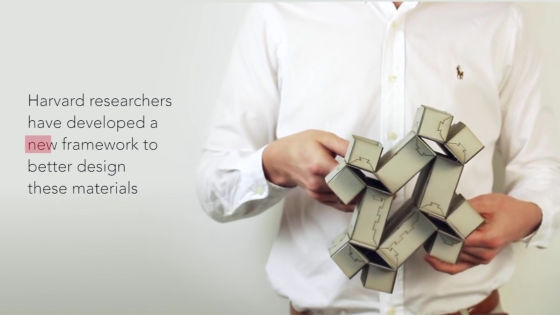
In another form.

Like to pull in another direction ......

You can also transform it into a different shape.


Reconfigurable materials were created with the idea of extending polyhedra.
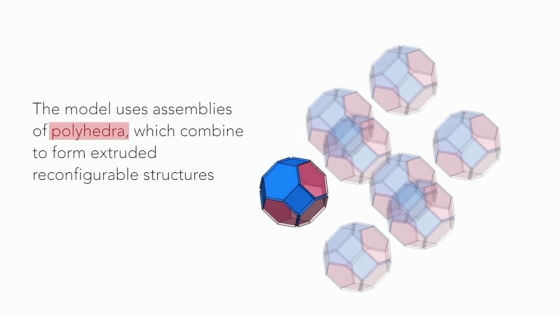
Research that reconfigurable materials started in 2014 realized reconfigurable materials by combining design and computational modeling.
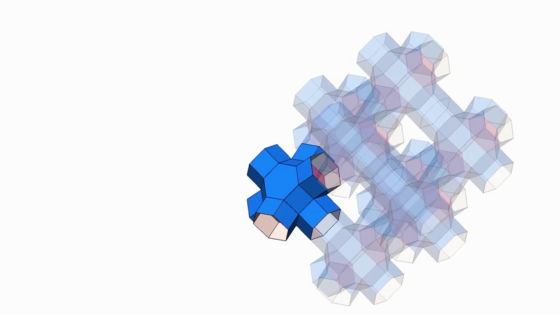
By using the calculation model born from research, it became possible to quantify the characteristics of the object such as material deformation and rigidity of the solid.

Using reconfigurable materials, it is also possible to create objects that behave like pantographs.

It is possible to create three-dimensional objects whose physical properties change with reconfigurable materials that can change the three-dimensional structure without destroying the material.
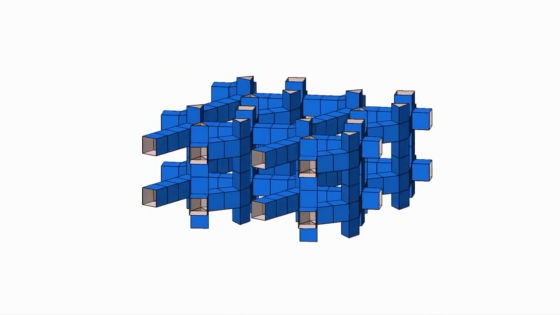
Three-dimensional objects of this complicated shape ...

It can be changed one after another to different three-dimensional structure of the following form.
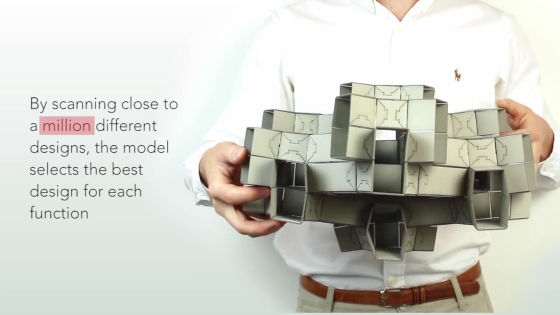
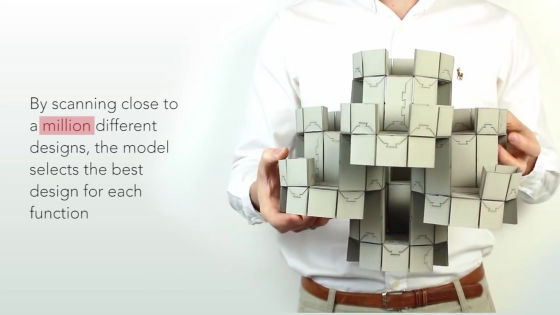
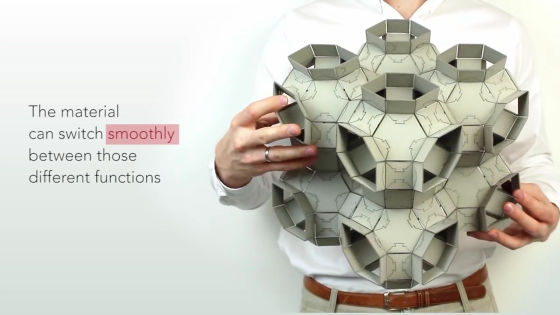
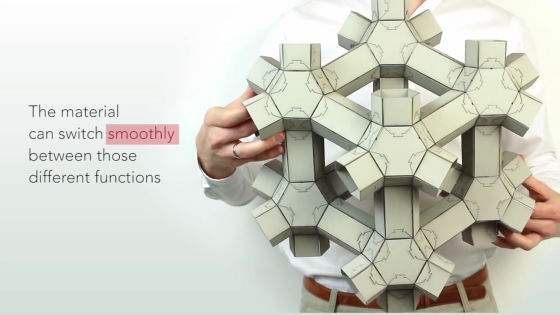
The research team at Harvard University has completed the design framework for making reconfigurable materials, and it is time to consider practical application to structural materials in the future. Reconfigurable materials are expected to be applied not only to material engineering but also to aerospace technology, physics, robot engineering, biomedical engineering, architectural studies and so on.
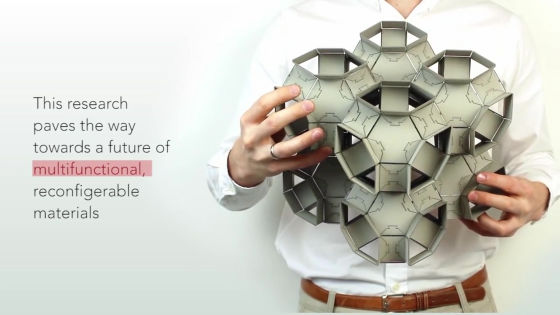
Related Posts:







